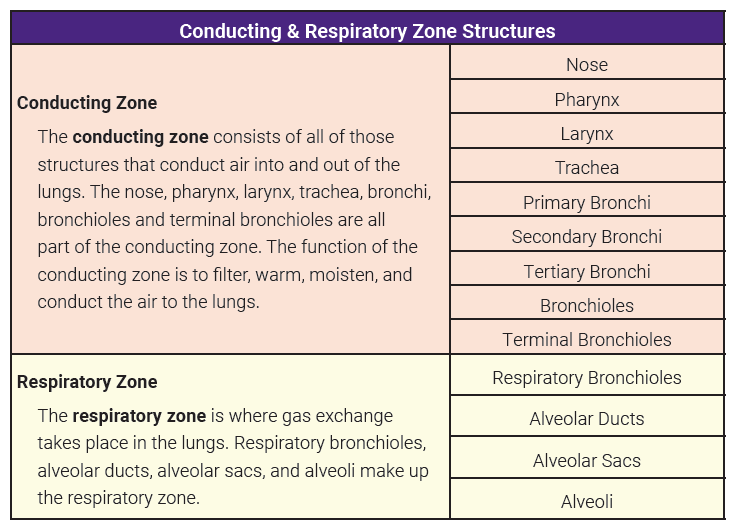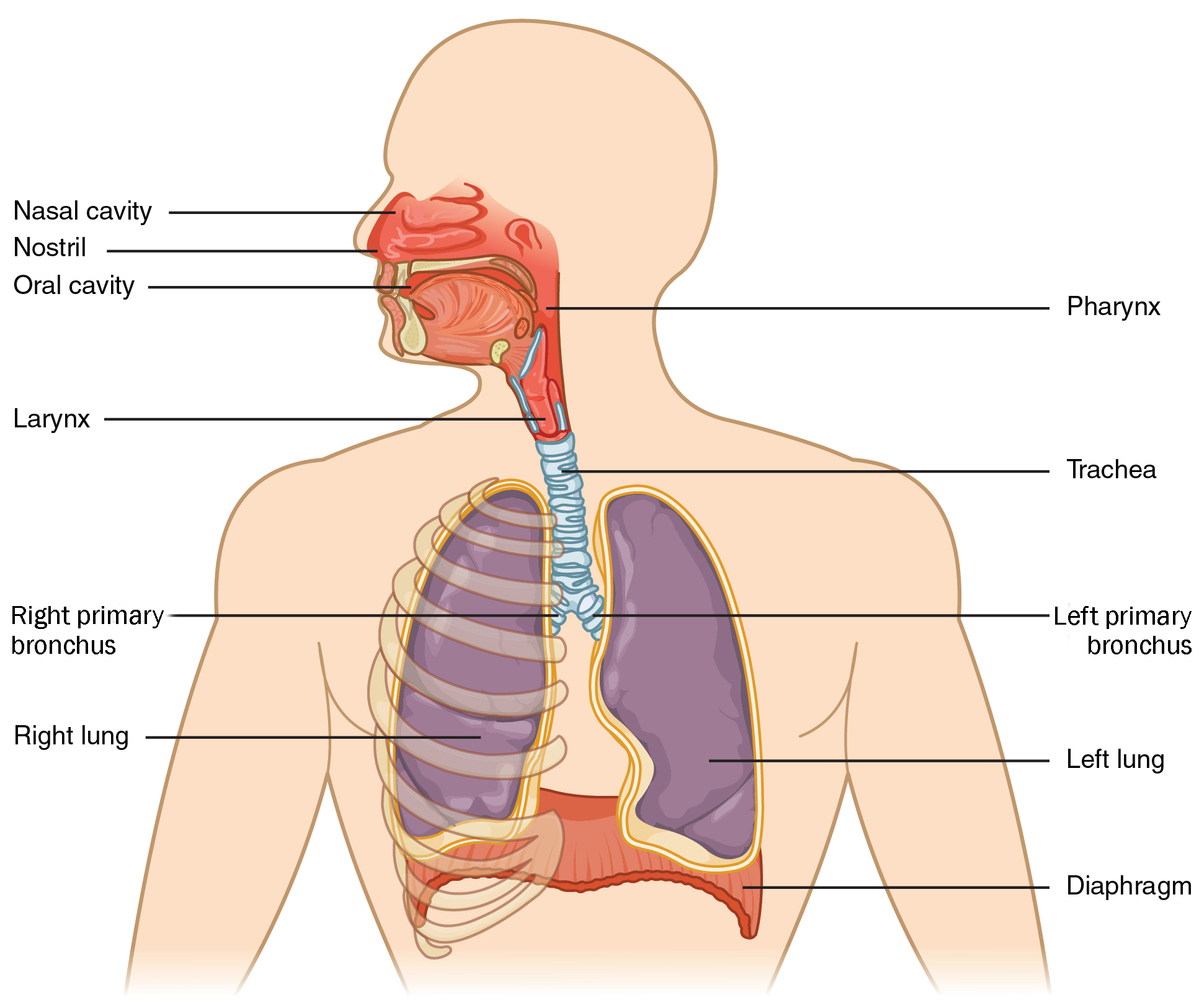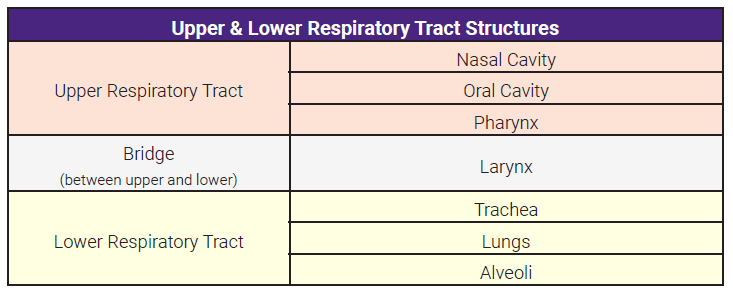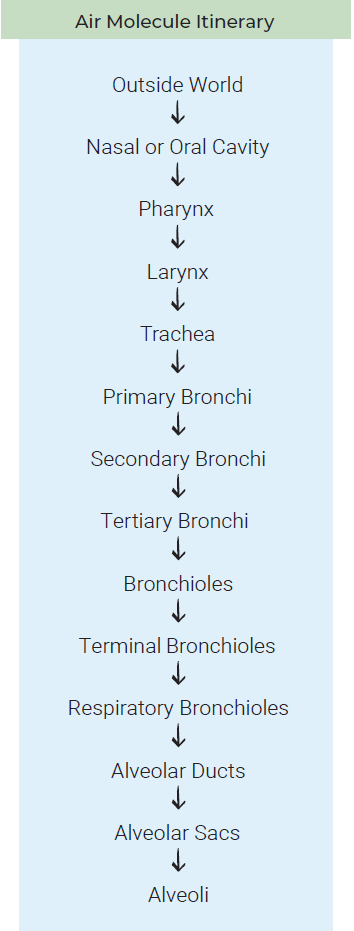Respiratory System Zones and Tracts
Objective 3
Define conducting zone and respiratory zone. Define upper and lower respiratory tracts. List each of the structures through which air passes during inspiration.

The respiratory system can be divided into a conducting zone and a respiratory zone based on the functionality of respiratory structures.
As mentioned previously, the respiratory tract can also be divided into the upper and lower portions. Authorities differ as to the proper classification of the larynx; we will place it as the bridge between the upper and lower respiratory tracts. So, everything superior to the larynx we will consider upper respiratory tract and everything inferior to the larynx we will consider lower respiratory tract. The upper respiratory tract includes the nasal cavity, oral cavity, and the pharynx. The lower respiratory tract includes the trachea, bronchi, and all components of the lungs.


The upper respiratory tract is full of endogenous (normal) flora. The lower respiratory tract should be sterile. Sputum, is a mixture of spit and abnormal, thick mucus. Sputum is often cultured if a clinician suspects pneumonia, an inflammatory process in the lungs. As the patient coughs up the sputum it mixes with normal microorganisms of the upper respiratory tract. The microbiologist must discern between the normal flora and any harmful pathogens.
Let’s summarize by looking at the travel itinerary for an air molecule. Remember that the air molecule must first travel through the cavities and tubes that make up the conducting zone. The molecule travels from the outside world through the mouth or nose (depending on your personal preference). It then must make it down the pharynx, through the larynx, and down the trachea. The molecule may either make a right or left turn into the right or left primary bronchus. Now the branching begins and each air molecule can take many different paths through the secondary bronchi, tertiary bronchi, and the terminal bronchioles.

These bronchioles end in the basic unit of the lung, the lobule. We are now entering the respiratory zone where oxygen and carbon dioxide will be exchanged. Each lobule contains a lymphatic vessel, an arteriole, a venule, and a branch from a terminal bronchiole. The terminal bronchioles subdivide into tiny respiratory bronchioles. At the end of the respiratory bronchioles we find the grape-like clusters of alveoli where gas exchange occurs. The oxygen from the air molecule diffuses into the bloodstream, traveling out to the tissues where it’s needed for metabolism.
Media Attributions
- U17-016 Conducting and Respiratory Zones Table © Burr, Justin is licensed under a CC BY-SA (Attribution ShareAlike) license
- U17-002 Major Respiratory Organs © Ernstmeyer, K. & Christman, E., eds. is licensed under a CC BY (Attribution) license
- U17-018 Upper and Lower Respiratory Tract Table © Burr, Justin is licensed under a CC BY-SA (Attribution ShareAlike) license
- U17-020 Air Molecule Itinerary © Burr, Justin is licensed under a CC BY-SA (Attribution ShareAlike) license

